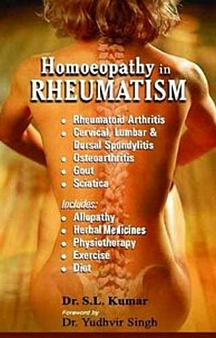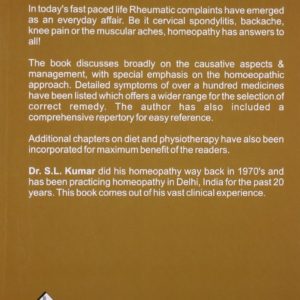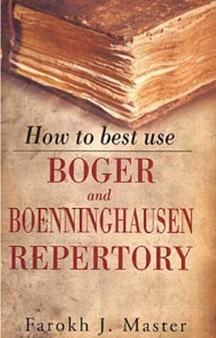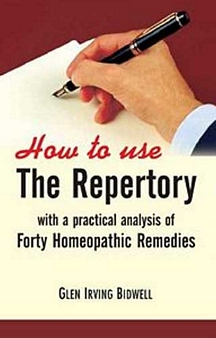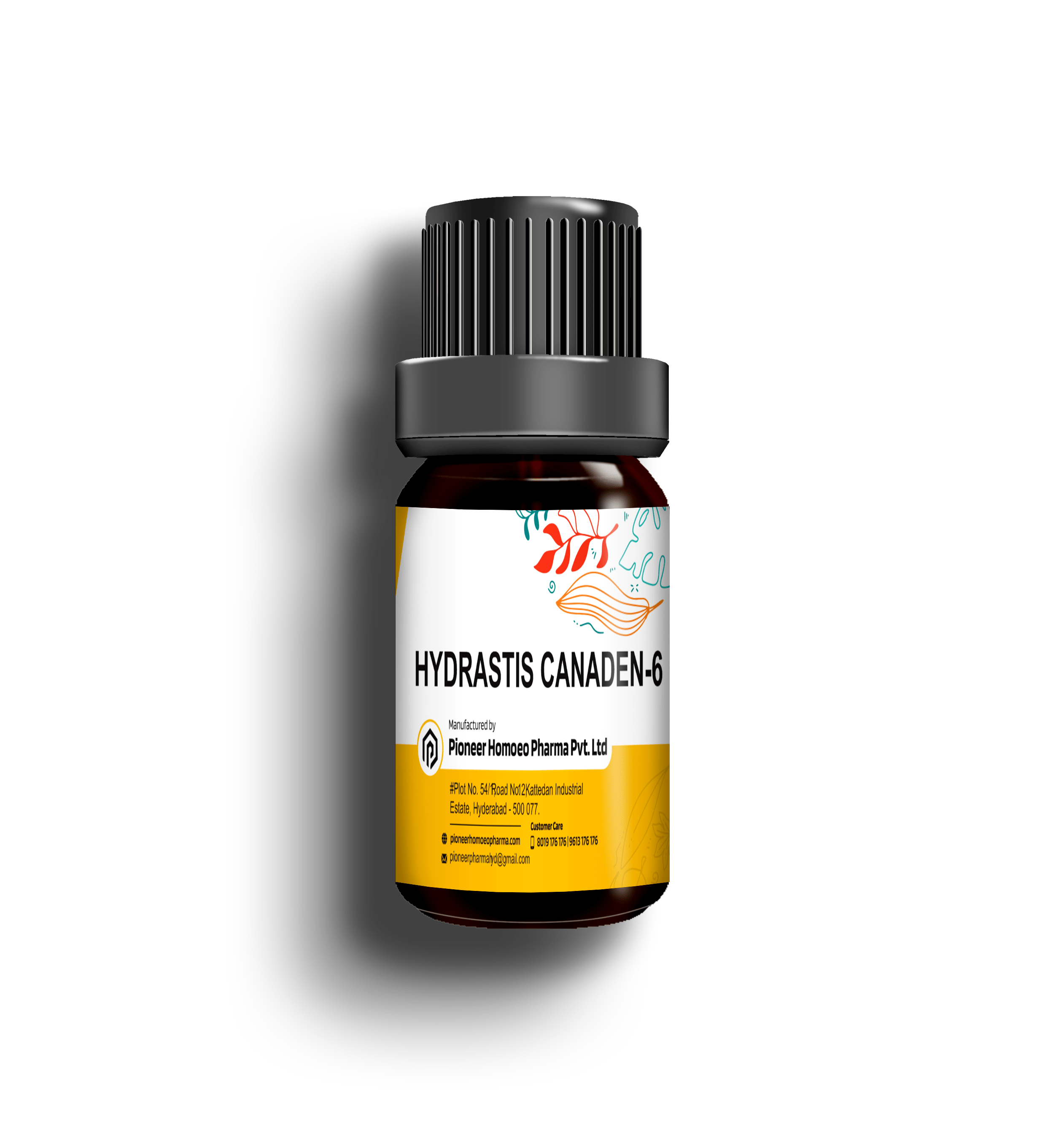Showing 1225–1236 of 2468 results
-
Homoeopathy in Rheumatism: by Dr. S.L. Kumar
Original price was: ₹299.00.₹254.00Current price is: ₹254.00. -
HOMOEOPATHY WATCHOUT EVERY DOSE By SANTHARAM
Original price was: ₹129.00.₹109.00Current price is: ₹109.00.This book unfolds a segment of the undiscovered area of homeopathy , clarify on how homeopathic medicines behave under various circumstances , threby giving a specific direction on good prescribing. It compiles the scattered work into one place helping us to select the dose and the potency and become a mster in the magical science of homeopathy.The effects of various prescriptions are described specifically on hypersensitive and weak patients, and specifically for psoric constitutions. It also gives an insight into what all can happen if there is a wrong homoeopathic prescription.
-
HOW TO BEST USE BOGER & BOENNINGHAUSEN REPERTORY By FAROKH J MASTER
Original price was: ₹125.00.₹106.00Current price is: ₹106.00.This book begins with a journey through the life and works of Boenninghausen and Boger, taking the readers to the destination of final conception of this repertory and its effective and efficient usage for practice. The concept and plan of Boger Boenninghausens Charecterstics and Repertory is thoroughly discussed which is essential for proper utlilization of this valuable tool. An additional section mentions the experiences of the author illustrating case studies. This book also contains gems of clinical case examples and rich practical experiences by the author. An indispensable book for young and experienced homeopaths alike Salient features of individual chapters of Boenninghausens Repertory Lie and works of Boger and Boenninghausen well illustrated. For concepual understanding of BBCR with illustrated examples. About the Author: Farokh Jamshed Master Dr.Farokh Jamshed Master is the professor of medicine at C.M.P.H Medical College, Bombay University. He is the honorary physician at Bombay hospital and K.E.M Hospital (Bombay).Dr. Masters birth into homeopathy was in the year June 1976.In 1985, he first started teaching abroad, which he continues until today . In 1991, Dr. Master, joined MPK Homoeopathic medical college in Jaipur, Rajasthan, and completed his Doctor of Medicine in December 1994. He was the student with the highest graduation results and at the same time became the countries first M.D. Homeopath. At present, Dr Master is the first homeopath in the country to be selected by Mumbai University (Medical University of Maharashtra, Nasik) to do his Ph.D in the subject of “Cancer and Homeopathy” Dr Master was instrumental in starting homeopathic out-patient dept in many allopathic hospitals viz. Bombay Hospital, KEM Hospital and Ruby Hall, Pune. Also in private and government sectors Dr Master was the first person to introduce homeopathy for the benefit of the patients.
-
HOW TO FIND THE SIMILLIMUM WITH BOGER-BOENNINGHAUSENS REPERTORY By B JAIN
Original price was: ₹265.00.₹225.00Current price is: ₹225.00.To enable the reader a brief discussion follows 25 cases of actual repertorization. These are followed by 25 cases for practice followed by another 25 cases where only symptoms are given. It helps finding the simillimum necessarily involves comparison of the case with remedies and of remedies between them and of weighing one remedy against another in its application to the individual case.
-
How To Use The Repertory
Original price was: ₹99.00.₹84.00Current price is: ₹84.00.With introduction of the book given by JT Kent and authored by Glen. I. Bidwell, who was the Member of American Institute of Homoeopathy; New York State Homoeopathic Society; The Society of Homoeopathicians; Monroe County Homoeopathic Society, this work deals with the instructions and ways to master repertory by telling how repertory is our chief instrument of precision. We have to understand that the need of repertory was to narrow down the cumbersome symptoms into rubrics and also to search the medicines in an easier way. This work is to help the members of our school who are desirous of mastering and using the repertory. It should be used as an index to lighten the task of memory in storing the vast symptomatology of our remedies.
But one should be careful that repertory has led us to the remedy which we believe covers our symptom picture; the selection of this remedy should be confirmed by reading its pathogenesis as given in one of our complete materia medicas. This not only acts as proof of the results obtained in the solving of our problems, but also acts as a check on hurried careless work and at the same time continually increases our knowledge of materia medica.
This book shows how to praise a repertory, its arrangement and how to use it wisely.
The general plan of the repertory work laid down here will help the readers master the arrangement of your favorite work – Boenninghausen’s Therapeutic Pocket Book along with the other repertories.
The author discusses Allen’s Slip Repertory where care must be taken not to give too high a standing to the nosodes and where the final results will be apt to point to Psorinum or Tuberculinum.
The book is divided into 2 parts-
– First part deals with HOW TO USE THE REPERTORY where most consideration is given to case taking, discussion about miasms, grading of drug symptoms, the selection of the remedy, the administration of the remedy, how to use the repertory, three directions of cure, the three miasms, repertory analysis, dosage and repetition, cases illustrating repertory work form of case record.
Index to arrangement of Kent’s repertory
The Repertory is divided into thirty-seven sections. The two most important sections are found first in the book Mind and the Generalities which are last.
Many of our chronic cases may be worked out from these two sections, from the mentals and the physical general, as when these are found to be covered by one remedy the particulars which have been observed, and many of the common symptoms will be found to fit in perfectly.
– Second part deals with the practical analysis of forty Homeopathic remedies, here forty Homoeopathic Remedies are analyzed using twenty-two rubrics. This tells us to study the medicines in a particular way which we can carry in our minds easily.
Constantine Hering said: “If our school ever gives up the strict inductive method of Hahnemann we are lost and deserve only to be mentioned as a caricature in the history of medicine.”
-
Human Physiology with Illustrations By W FURNEAUX
Original price was: ₹549.00.₹466.00Current price is: ₹466.00.According to the biochemic theory, disease is the result of deficiency of certain inorganic substances in the body. Based on this theory this book is written to cover everything in this regard to help treat the ailing masses. The construction of the book is such that it tells you about the biochemic theory in detail along with the description of common diseases and their treatment part. Some useful cases have been given at the end to cater to the needs of the students as well as the professionals.
-
HURA BRASILIENSIS
₹95.00 – ₹140.00HURA BRASILIENSIS DILUTION:
Key Ingredient:
Hura BrasiliensisKey Benefits:
- It helps in reducing irritation, confusion and dizziness in mind
- It is also useful in treating lancinating pains in teeth and in gums
- Helps in reducing dryness of throat
- Effective in curing stomachache and diarrhoea
- It is also useful in healing eruptions and itching on skin
- Helps in curing vesicles on skin
-
HYDRANGEA ARBORESCENS
₹95.00 – ₹140.00HYDRANGEA ARBORESCENS DILUTION:
Key Ingredients:
Hydrangea ArborescensKey Benefits:
- Helps to get rid of kidney stones
- Relieves from abdominal pain and pain during urination
- Helps treat presence of white salt like particles in urine
- Helps relieve from dizziness and oppression in the chest
-
HYDRANGEA ARBORESCENS Q
Original price was: ₹160.00.₹150.00Current price is: ₹150.00.HYDRANGEA ARBORESCENS Q:
Key Ingredients:
- Hydrangea Arborescens
Key Benefits:
- Used for the treatment of prostate enlargement and urinary disorders
- Helps in reducing the amount of white amorphous salts in the urine
- Prevents the formation of calculus and relieves pain associated with renal calculus
- Reduces the urge to urinate frequently and relieves pain while urinating
- Based on homoeopathic composition, it is safe to use and has no side effects
-
HYDRASTINUM MURIATICUM
₹95.00 – ₹140.00HYDRASTINUM MURIATICUM DILUTION:
Key Ingredients:
- Hydrastinum Muriaticum
Key Benefits:
- Effective treatment of chronic kidney affections
- Reduces chronic digestive troubles
- Reduces redness and soreness of mouth
- Treats cough and cold effectively
-
HYDRASTIS CANADEN
₹96.00 – ₹120.00HYDRASTIS CANADEN
Key Ingredients:
- Extracts of golden seal (Hydrastis) herb
Key Benefits:
- Soothes the mucous membrane of uterus, stomach, throat, etc
- Effective for weak and old people for improving muscular power, digestion and reducing constipation
- Effective for treating cancer
- Helps in treatment of smallpox
- Stimulates the uterine muscles and the central nervous system
- Has amoebicidal and antibacterial properties
-
HYDRASTIS CANADENSIS
₹95.00 – ₹140.00HYDRASTIS CANADENSIS DILUTION:
Key Ingredients:
Extracts of golden seal (Hydrastis) herbKey Benefits:
- Soothes the mucous membrane of uterus, stomach and throat
- Effective for weak and old people for improving muscular power, digestion and reducing constipation
- May help in treating cancer and also helps in treatment of smallpox
- Stimulates the uterine muscles and the central nervous system
- Has amoebicidal and antibacterial properties
